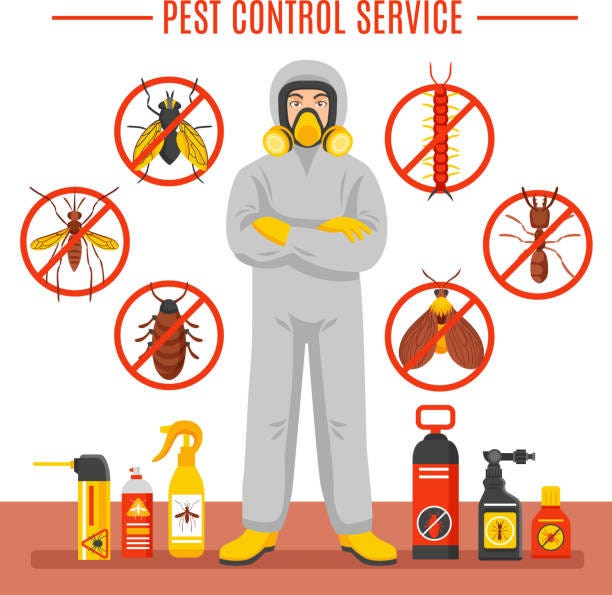Efficient A1 Bed Bug Treatment in Charlotte - Safe and Proven Techniques
Efficient A1 Bed Bug Treatment in Charlotte - Safe and Proven Techniques
Blog Article
Bed Insect Treatment Malfunction: Comparing Chemical Vs. Non-Chemical Solutions
In the realm of parasite control, particularly when taking care of the persistent problem of bed pests, the option in between chemical and non-chemical therapy services can be a pivotal one. Both techniques offer distinctive advantages and drawbacks, affecting variables such as performance, safety and security factors to consider, and overall price. By examining the nuanced information of each technique, a clearer understanding of which course to seek in attending to a bed bug problem can be attained.
Efficiency of Chemical Therapies
Chemical treatments for bed pest invasions have actually been commonly acknowledged for their potent and rapid efficiency in eradicating these bugs. When considering the efficiency of chemical treatments, it is essential to understand that they can offer a thorough and fast remedy to a bed insect issue.
Furthermore, chemical therapies have the benefit of supplying residual results, suggesting that they can continue to get rid of bed bugs even after the first application. This residual activity is specifically valuable in combating any potential re-infestations. In addition, the fast activity of chemical therapies can bring relief to individuals facing severe bed insect infestations, allowing them to restore control of their living areas quickly.
Security Worry About Chemical Solutions
One vital aspect that needs cautious consideration when utilizing chemical remedies for bed insect treatment is ensuring the safety and security of owners and the setting. Exposure to specific chemicals utilized in bed insect therapies can lead to respiratory problems, skin inflammation, or other damaging reactions, specifically in individuals with pre-existing problems or sensitivities.
In addition, the environmental impact of chemical remedies is one more substantial factor to consider. Some chemicals made use of in bed pest treatments may be unsafe to advantageous bugs, wildlife, and ecological communities if they seep right into the soil or water systems. It is essential to utilize chemical therapies judiciously, complying with safety and security guidelines, and considering less poisonous choices to mitigate these risks and make certain the effective and secure management of bed insect infestations.
Benefits of Non-Chemical Methods
Considering the prospective safety and security problems and environmental impact related to chemical solutions for bed bug treatment, exploring non-chemical approaches offers an encouraging choice with a number of distinct benefits. Non-chemical techniques use a safer option for families, specifically those with youngsters, pets, or individuals conscious harsh chemicals. These strategies eliminate the threats of exposure to poisonous materials, lowering the possibility for negative health and wellness results. Additionally, non-chemical treatments are eco friendly, as they do not contribute to air or water air pollution, making them a sustainable selection for insect control.
In addition, non-chemical solutions can be reliable in targeting bed insects, consisting of hard-to-reach areas where chemical therapies might not pass through. Techniques such as warmth therapy, vacuuming, our website vapor cleaning, and bed mattress coverings provide detailed eradication without using damaging chemicals. Moreover, non-chemical techniques can be less turbulent, requiring very little preparation and permitting quicker reentry into dealt with areas. Overall, deciding for non-chemical bed insect therapy methods not just prioritizes security and environmental protection however additionally makes sure extensive and click this link efficient parasite control.
Limitations of Non-Chemical Treatments

Additionally, non-chemical therapies often call for multiple applications to attain successful obliteration. This can be taxing and might not constantly ensure complete elimination of all bed pests and their eggs, particularly in concealed or hard-to-reach areas.
In addition, the success of non-chemical therapies greatly relies upon correct execution and thoroughness, which can be challenging for people without specialist experience. Inadequate application of non-chemical approaches may cause insufficient elimination, leading to consistent invasions and the requirement for added therapies.
As a result, while non-chemical treatments have their benefits, it is necessary to acknowledge these restrictions and consider them when identifying the most reliable strategy for taking care of bed pest infestations.
Expense Comparison: Chemical Vs. Non-Chemical Options
Given the constraints connected with non-chemical treatments, an important aspect to review in the context of bed pest management is the price contrast in between chemical and non-chemical alternatives. In contrast, non-chemical therapies like heat therapy or vapor can be more costly, with expenses varying from $1,000 to $6,000 for an entire home. While the preliminary cost of chemical treatments might seem lower, several treatments may be needed to fully eradicate the invasion, potentially boosting the general price.
Conclusion

Considering the click now possible security issues and ecological impact associated with chemical services for bed insect therapy, exploring non-chemical methods offers a promising option with several distinctive benefits.Given the limitations associated with non-chemical therapies, an important element to assess in the context of bed bug monitoring is the price contrast in between chemical and non-chemical alternatives. In contrast, non-chemical therapies like heat treatment or steam can be much more pricey, with expenses ranging from $1,000 to $6,000 for an entire home. While the initial price of chemical therapies might appear lower, multiple therapies might be called for to totally eradicate the invasion, potentially boosting the total price.In verdict, when comparing chemical and non-chemical bed insect treatment options, it is important to consider performance, safety, benefits, restrictions, and expense.
Report this page